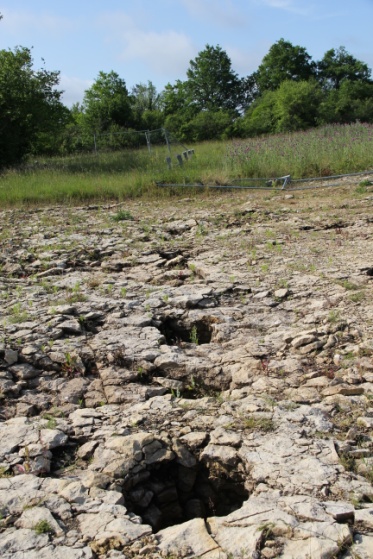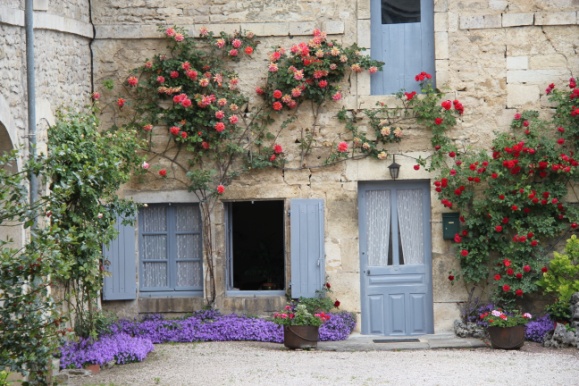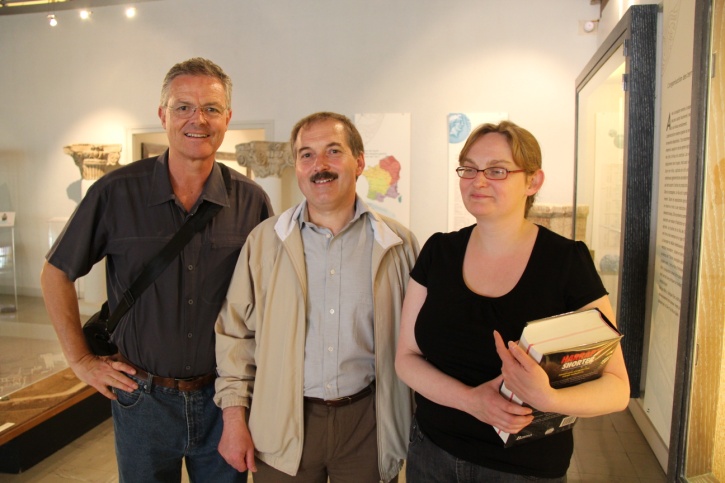Dijon
Posted on Jun 07, 2010 in category
Determined to revisit Mont Lassois, we set out after breakfast for this very historic site. After climbing a 200 metre hill in the car, a further hike on foot was required before we came across a recently excavated site. The stratigraphy tags were still in the ground, fencing was on site and plastic covered some equipment. No information signs were onsite but the site was quite large with signs of pillar foundations. Mont Lassois was a Hallstatt (early Iron Age) palatial site and a temple complex has recently been discovered there but I can’t say that we observed was the temple or palace.

On the recommendation of the guide at Chatillon-sur-Seine’s Museum, we decided to travel to Dijon via Flavigny, a Medieval/Renaisssance village. However, we struck a problem, Lizzy, our GPS ‘guide’, listed two Flavignys within 8 kms of each other. We had a 50% chance of getting it right; correct, we picked the wrong one. Consequently, our trip to Dijon went via the Cape!
French countryside in the Côte d’Or is different to the common image that grape vines dominate Burgundy. Here wide open cropping fields are the norm. Crops like wheat, barley and canola grow profusely. The fields are punctuated with copses of trees and little evidence of distinct boundaries. The roads are narrow but well maintained. Grass-cutting tractors shave a metre or so each side of the road.

Country near Mont Lassois, Chatillon-sur-Seine
Travelling through many small villages was a pleasure despite reducing speed at times to ‘below zero’ to negotiate narrow bends that sometimes have house walls as boundary lines.
Flavigny is perched on a hilltop. It is remarkably unspoilt. One coffee shop seems to have a monopoly. I stand to be corrected on this observation! It’s a town you must walk around; a town to savour the incredible medieval and Renaissance architecture; a town that cherishes its past. Stone masons were working on a house renovation in one blocked off street and residents took pride in their small but pretty gardens.

We climbed this medieval tower


Two Flavigny houses displaying their climbing roses
An interesting commercial venture in Flavigny that has made a name for itself in Burgundy is Les Anis de Flavigny. A sweet company that specialises in aniseed, ball-bearing sized drops has restored an old abbey that brags of a 10th century A.D. origin. Apart from the sweet shop and factory premises, tourists are able to explore the former abbey crypt section. One interesting thing I noticed was a Gallo-Roman stone funerary monument in the shape of a pine cone, a symbol of new life and fertility.


Inside the 11th century remains of an abbey crypt
Our destination that day was Dijon, the capital of the Burgundy region. In particular, we had an appointment with Christian Vernou, the Director of Dijon’s Archaeological Museum that is situated in a former abbey of Saint-Bénigne. Today was special again as the museum was closed to the public. The museum is undergoing renovations as well as preparing for a new exhibition of Gallic and Gallo-Roman coins.
Christian has a great sense of humour in our conversations with him. On a more serious note he found it interesting that Australian teachers would be interested in their French history. I told him that one very positive aspect of Australian education is that our students study world history including European and Asian histories in order to understand people and events more thoughtfully. Christian agreed that this is a commendable goal.
Christian asked Marie-Laure Mignotte, his assistant Education Officer, to provide a 2 hour tour in English for us. Marie-Laure’s English gained in confidence as we toured around the exhibits. Her knowledge was extensive and she told us many interesting things about the exhibits.

Christian Vernou and Marie-Laure with her huge English dictionary she carried with her all the way!
Dijon’s main exhibits include artifacts from the villa at Selongey found near Dijon, Gallo-Roman stone funerary monuments kept in the cool basement of the old Benedictine abbey, many religious statues of gods and goddesses (especially Sequana) and the votive offerings that were placed in the sanctuary of the Sources of the Seine.

Many wooden votive offerings to the Gallic/Gallo-Roman goddess Sequana are kept in the cellar of Dijon’s Archaeological Museum. The lighting is turned on for this exhibit when visitors arrive to view them.

On the right is a stone offering of a hand to Sequana
One Gallic/Gallo-Roman tradition that lives on is the consumption of snails. Snail shells from Solongey villa revealed not only their culinary delights but also the season of the year in which the villa was destroyed. Snails form a hard shell at the entrance of the shell in autumn to protect them in winter.

Snails served up at Solongey villa in Gallo-Roman times.

Eating snails for the first time in Dijon. Tasty!